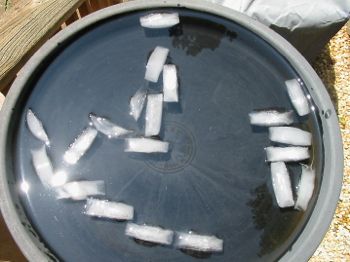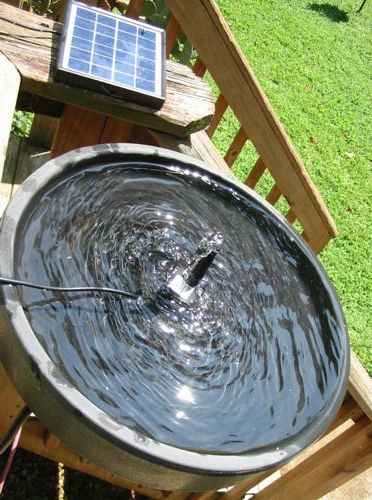- Bird Houses, Copper Roof Birdhouse, Decorative Bird Houses, Dovecote Birdhouse, Uncategorized, Unique Birdhouses, Vinyl with Copper Roof Birdhouses
Who Uses Those Fancy Copper Roof Birdhouses?
Some birds use houses and some just couldn’t be bothered. Well, it’s more along the lines of instinct let’s say. Just as some folks have houses for birds, while some prefer an elegant birdhouse on their property. It’s because of the aesthetically pleasing design and great quality they look so perfect in the landscape. But these copper roof birdhouses are definitely meant for the birds!
Bluebirds or tree swallows are likely to use a single entry home, with good chances of titmice, nuthatches or chickadees taking up residency in these, or even a triple-entry style. You’ll never find goldfinches, cardinals, robins or jays setting up house in one of these beauties though. Their preferences are hedges, shrubs and trees.
On a more stately scale, martins are likely to nest in a larger house with 8 or 12 entries, often referred to as
dovecote styles, but we promise… doves will never use them! The only doves around our yards are mourning or ring-neck doves. On an extremely rare occasion, a white dove may be spotted-but these are domesticated and used for release at weddings and special events (not a fan of this practice).
Nobody will use any of these stunning birdhouses if you:
- never tend to it
- block the entries
- keep it indoors for decor… but over the years we’ve heard this and seen this, and it’s kind of sad because we’re bird freaks-but to each his own. Chocolate and vanilla, right?
One important thing to note if you’re planning to provide these houses specifically for birds to nest and raise their young: house sparrows! Once heard of as sparrow slums, the multi-entry houses are always inviting to killer house sparrows. And killer in its true meaning, (not like killer-awesome) house sparrows are very aggressive towards native songbirds. Due to a shortage of natural nest cavities, competition for nesting space is brutal… just ask any bluebird or martin landlord 🙁 If house sparrows are prevalent in your area, diligence is required to keep them at bay… regardless of any birdhouse you may offer. Don’t take our word for it, detailed info on identifying and controlling these non-native and invasive birds can be found at sialis.org
-
Gear Up that Window Hummingbird Feeder
The southern trek approaches and hummingbirds instinctively know to fuel up for the long journey. As daylight hours become shorter, all migratory birds are preparing for their long flights south.
Because hummingbirds are so territorial, they seem to spend more time fussing over (defending) their claimed feeders than actually eating. This time of year can be a trip if you really observe the tiny sprites. Adding an extra feeder is most helpful, if you can add two… even better. Consider a window hummingbird feeder, or at least placing one of them within view from inside your home. It’s an ideal way to catch small glimpses of action here and there while going about your daily routine. If we could sit on the deck all day and just watch… many of us would, the sprites are that mesmerizing.
Migration is a frenzied time around feeders. In the Eastern part of the country, male Ruby Throats begin their journey first. So aggressive around feeders, it seems their lives depend on that nectar. Females and juveniles follow, but you’ll never see them in groups or flocks because they fly solo. Even first-timers follow the instinct Mother Nature gave them to fuel up and find better digs for winter. Some land in Mexico for the season, while others
journey further to Central and South America.
Nectar solutions can be a little stronger now as some recommend changing the ratio from the standard 1:4 to 1:3. One cup table sugar to three cups of water. The extra calories serve hummingbirds well in their quest to fatten up.
It’s also the optimal time for a swing! Say what? A hummingbird swing… really! Have you ever seen them? They’re hanging perches for the birds to rest while guarding their feeder. When we first installed ours, it seemed so-so, not a whole lot of action. But once the big migration was under way… omg, what a hoot! It’s the original, it’s Pop’s Hummingbird Swing and here’s the real story – enjoy!
- Bath Heaters & Deicers, Bird Accessories, Bird Baths, Heated Bird Bath, Solar Birdbath Bubbler, Uncategorized
Heated Bird Baths in Summer?
So when it’s 90 degrees, how useful is that heated bath? Certainly unplugged and cord tucked for the season, it will still see daily activity and may even be life savers for some birds during severe drought. Regardless of seasons, water is a critical life source for all beings.
When folks turn their baths over for winter, the birds who depended on that water source must find another. I wonder what they must think? The birds that is- not the people! “Don’t they understand, we need water in winter too! It really sucks trying to eat snow, takes too much energy.”
Whether you’re thinking of purchasing your first birdbath, or adding an extra one to your habitat, heated bird baths are a wise choice for year-round use. Because another severe winter looms on the horizon, resident birds will benefit as will your whole bird-watching experience!
And on those dog days of summer? Ice cubes offer a refreshing spot, or even accessories like solar fountains will create a most welcoming haven for feathered friends!

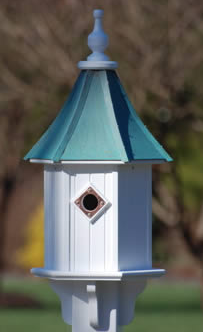
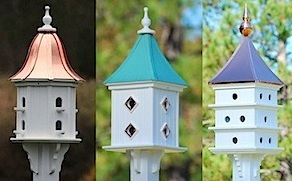
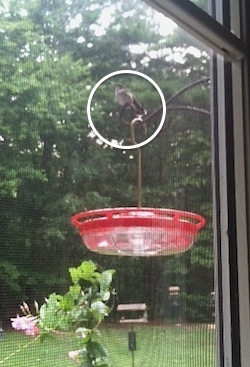
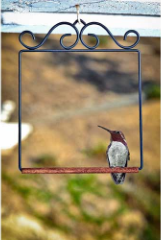 journey further to Central and South America.
journey further to Central and South America.